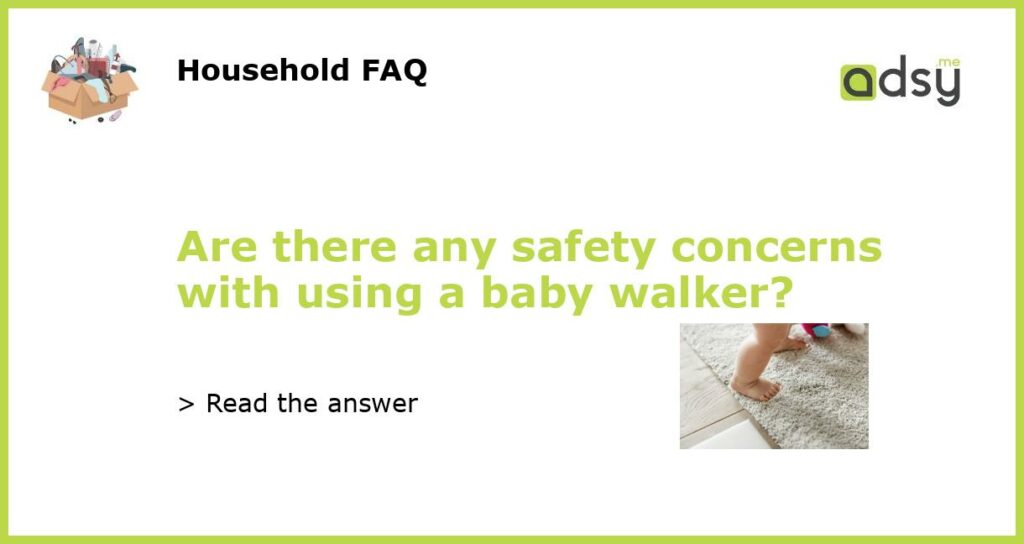Safety concerns with baby walkers
For decades, baby walkers have been a popular item among parents as a way to help their little ones learn how to walk. However, as time has gone on, there has been growing concern about the safety of these devices. In recent years, several countries have banned the sale of baby walkers entirely, while others have placed strict regulations on their use. But what are the safety concerns surrounding baby walkers? Let’s take a closer look.
Can cause serious injuries
The most significant safety concern with baby walkers is that they can cause serious injuries to infants. According to the American Academy of Pediatrics, between 1973 and 2008, there were over 230,000 walker-related injuries in children under 15 months of age. Some of these injuries were minor, such as bumps and bruises, but others were much more severe, including skull fractures and traumatic brain injuries.
Delay in motor development
Another concern with baby walkers is that they can delay a child’s natural progression in learning to walk. When babies use walkers, they’re able to move around without using their own leg muscles. This can lead to weaker leg muscles and a delay in learning to walk independently. In contrast, when a baby is learning to walk without the aid of a walker, they’re building up their leg muscles and gaining better balance, making it easier for them to walk without assistance in the future.
Can cause accidents
Baby walkers can also cause accidents around the home. Because walkers allow babies to move around quickly, they can easily reach for objects on tables or countertops, leading to accidents involving things like hot liquids, sharp objects, or electrical outlets. Additionally, babies using walkers can easily roll down stairs or fall over obstacles in their path.
Distracting for parents
Another potential danger with baby walkers is that they can be distracting for parents. Walkers give babies more movement, which can make them harder to keep track of. While parents might think their child is safe in a walker, they could be getting into something dangerous, and it could take longer for parents to notice due to the increased freedom of movement provided by the walker.
Solution: alternatives to baby walkers
So what’s the solution if baby walkers aren’t recommended? There are plenty of alternatives that parents can use to help their child learn how to walk. Some of the best options include push toys that children can use to help support themselves while they move, as well as various types of “sit-to-stand” walkers that enable babies to learning walking at their own pace, while providing a measure of safety and stability.
Baby walkers are not worth the risk
In conclusion, the safety concerns around baby walkers are serious, and they should be avoided. From the potential for injuries and accidents to the fact that they can delay motor development and distract parents, there are simply too many risks involved. Instead, parents should turn to alternative methods to help their children learn how to walk safely and at their own pace.






